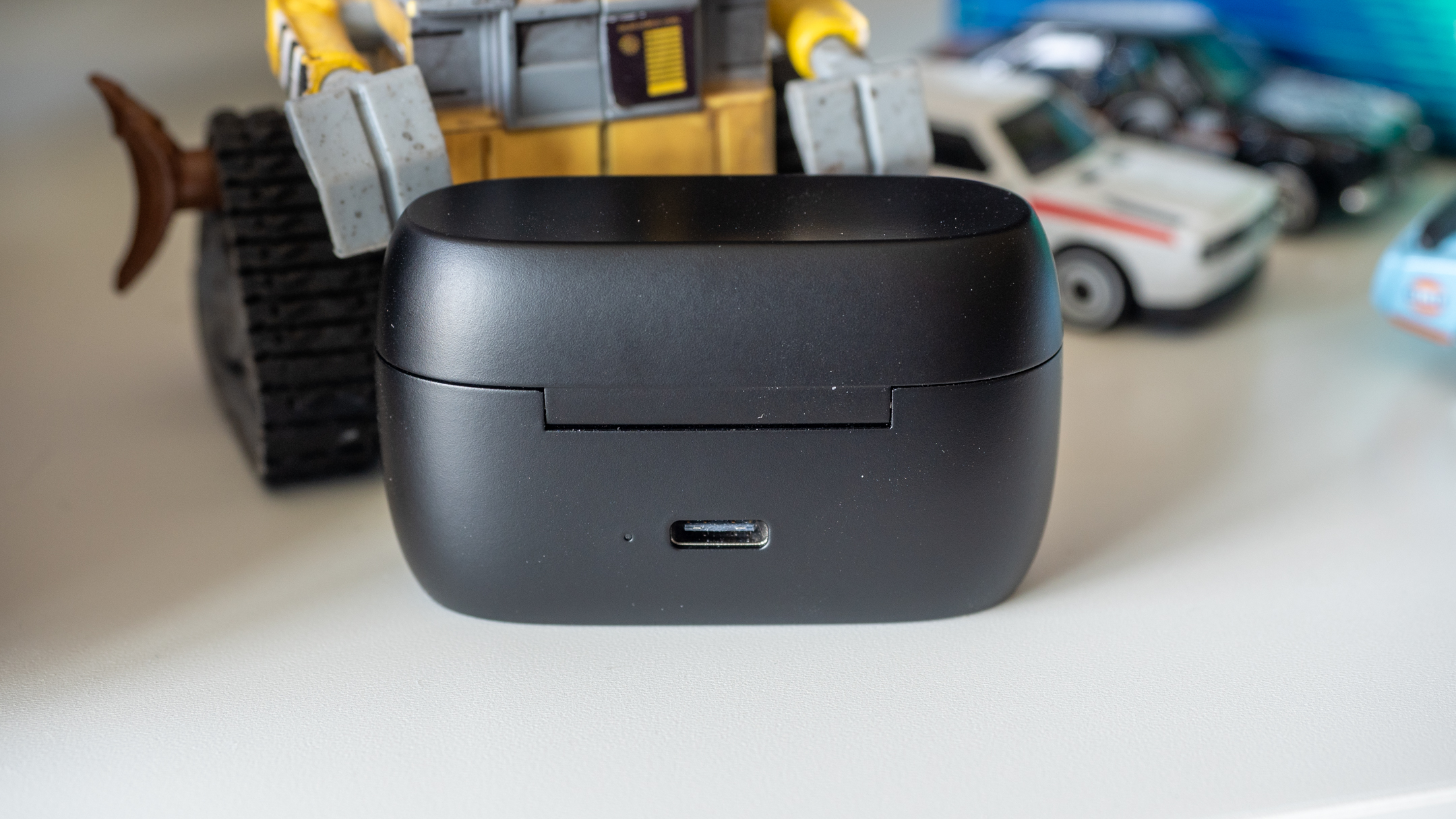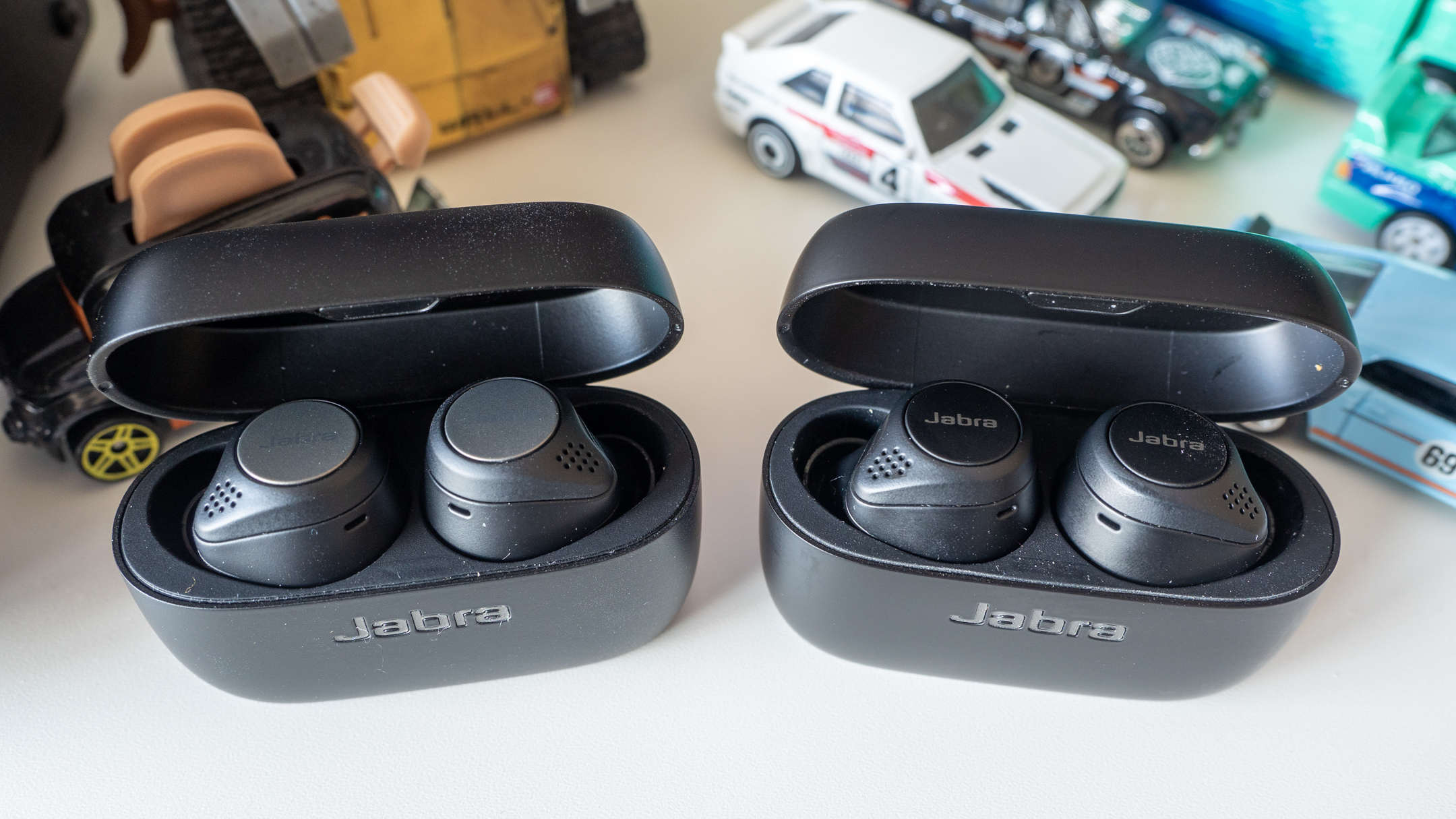TechRadar Verdict
The Jabra Elite Active 75t are a slight improvement for sports-focused users for slightly more money. Only a slightly better IP rating and a rubberized finish separate these from the base Elite 75t however, so if you don’t need these features save yourself the cash and get the regular, and already excellent, Jabra Elite 75t.
Pros
- +
Rubberized texture provides grip
- +
Increased IP rating
- +
Compact case and earbuds
Cons
- -
Mediocre sound
- -
Dust and fingerprint magnet
- -
Elite 75t are a better value
Why you can trust TechRadar
If you have a winning formula on your hand, it’s best not to mess with it too much. The Jabra Elite 75t is one of the best true wireless headphones you can buy today, and the “Active” variant doesn’t change much of the formula.
In fact, the only notable differences between the Jabra Elite Active 75t and Jabra Elite 75t are their finish, IP-rating and price: for just $20 extra, the Jabra Elite Active 75t gets you a rubberized coating and increased IP57 rating (up from IP55).
So is it worth it? Well, for sports enthusiasts who want that little extra peace of mind, it absolutely is. However, you can save the cash if you don’t plan on working out vigorously by picking up the regular, and already excellent, Jabra Elite 75t.
[Update: The Jabra Elite Active 75t – along with the Elite 75t – will receive a free upgrade that adds Jabra's standard active noise cancelling solution. The Jabra Elite 75t series will also be available to purchase with ANC as standard from October 2020. Both pairs of wireless earbuds are also now customizable via a new 'My Sound' feature in the Sound+ app. The app runs you through a hearing test, asking you to tap an icon when you can hear a tone, and then adjusts the sound profile of your earbuds based on the results. As well as that, you can now customize the controls for the physical buttons on your earbuds.]
You can also now get the earbuds with wireless charging, which costs £209 (about $260 / AU$370).]
Price and release date
The Jabra Elite Active 75t cost $200 (£190 / AU$329) and come in four colors: Navy, Copper Black, Grey and Titanium Black (as seen in this review). Jabra will release a Mint and Sienna sometime in May 2020, but otherwise all other variations of the Jabra Elite Active 75t are available now.
Design
The design of the Jabra Elite Active 75t is basically identical to the non-Active Elite 75t: the wireless earbuds and charging case are exactly the same but the Active version features a rubberized coating that prevents drops.
Sign up for breaking news, reviews, opinion, top tech deals, and more.
The matte plastic on the regular Elite 75t is a bit slippery so the rubberized texture is a nice addition. However, it’s also a fingerprint and dust magnet. If you plan on using these to work out, be prepared to wipe down the earbuds and case from time to time to keep them looking clean. The charging case is also coated in a rubberized texture and features the same USB-C charging port of the regular Elite 75t.

With the same design as the Jabra Elite 75t, the Active version gets the same excellent fit and finish as its cheaper brother. Controls can be handled with the physical buttons on each earbud, though it’ll take a bit of time to learn all the shortcuts. For example, music playback is controlled via the left earbud only, so that means you won’t have access to them if you’re using the headphones in single-earbud mode. (This also means that you won’t be able to use the left earbud in single-earbud mode.)
Volume controls are still tricky to dial in since you need to press and hold to increase/decrease volume. It’s very easy to overshoot your target and it’s much easier to change the volume on your smartphone instead.
Speaking of smartphones, Jabra has an excellent mobile application for customizing the user experience. The app has a customizable EQ, sound profiles and is the only way to download firmware updates to the headphone.

Performance
Like the non-Active version, the Jabra Elite Active 75t is extremely bass-forward and muddy, so those wanting a more neutral tonal balance will have to use the app’s EQ to dial out some bass. Detail and soundstage are just good, and bass, when dialed down, lacks texture detail of more expensive headphones like the Master & Dynamic MW07+ and the Sennheiser Momentum Wireless 2.

While the Jabra Elite Active 75t doesn't feature active noise cancellation, its ability to block out noise passively is excellent. The included eartips help dial in a good seal and helps to block out most external noise.
That said, if you want to be aware of your surroundings, like on a run, you can enable HearThrough with a single press of the left earbud. HearThrough can be customized in the app to allow as much or as little external noise in as you like.
In terms of battery life, you get 7.5 hours on a single charge and a total of 28 hours with the charging case, and we had no issues achieving these numbers at 50% volume. This is the exact same battery life of the non-Active version and is competitive in the segment.
Final verdict
The Jabra Elite Active 75t is an excellent headphone for sports enthusiasts who want a little bit extra peace of mind. The increased IP rating will help the headphones resist dust and sweat just that bit more, and its rubberized texture helps gripping the case and earbuds if you have sweaty hands.
For most people though, the regular Jabra Elite 75t are enough since they still boast an IP55 rating (vs the Active’s IP57 rating) but fitness enthusiasts are better served by spending just a bit extra for the peace of mind.
- Looking to cut the audio cable? Here's our round-up of the best wireless headphones
- Get the best deal on Jabra products with our Jabra coupon codes.

